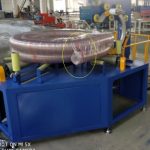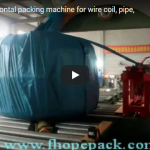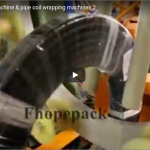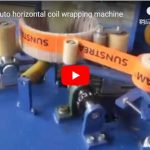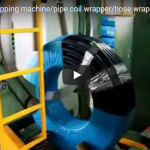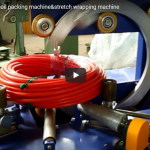Horizontal Coil Wrapper is a type of packaging machine designed to pack pipe coils using different materials such as stretch film, paper, woven fabric, and PE. It is a versatile machine that can handle a variety of materials and pack sizes.
The machine features a wrapping ring that can rotate at speeds ranging from 10 to 120 revolutions per minute, providing flexibility and high packing efficiency. The wrapping ring is designed to wrap the material around the coil horizontally, ensuring that it is tightly packed and well-protected during transportation and storage.
The Horizontal Coil Wrapper is suitable for industries that deal with pipes and coils, such as construction, manufacturing, and logistics. Its compact design makes it easy to integrate into existing production lines or stand-alone operations, saving space and improving efficiency.
The use of different packing materials such as stretch film, paper, woven fabric, and PE allows the machine to pack a wide range of coil sizes, making it a versatile solution for various packaging needs. The Horizontal Coil Wrapper ensures that the packed coils are tightly wrapped and well-protected, reducing the risk of damage during handling and transportation.
In conclusion, the Horizontal Coil Wrapper is an efficient and versatile packaging machine that can handle different packing materials and coil sizes. Its compact design, high wrapping speed, and horizontal wrapping capability make it an ideal solution for industries that deal with pipes and coils.
info@fhopepack.com
